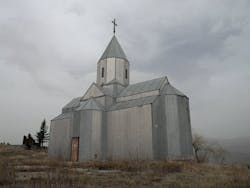A recent article in Religious Product News points up a noteworthy trend: Churches are discovering the benefits of metal buildings. The article reports on church projects in various parts of the country that have been built with pre-engineered, factory-manufactured metal systems.
“A metal building system is not a new concept,” writes industry veteran Charles Praeger. “It has been used regularly since the 1950s to provide congregations with worship facilities and gathering spaces. What is new in the industry is the technology and innovation behind the design and manufacturing process. Today, manufacturers have the capability to match a building owner’s needs to create a customized building solution.”
The churches in the article present a variety of architectural styles, but the different case studies have several common themes. The wide, column-free, clear span, made possible with metal buildings has an obvious appeal for sanctuary spaces and gathering spaces. Affordability, both in first cost and in life cycle costs are also a big factor for many churches. Speed of building was important too, especially when a new church was being built to replace a building that had been destroyed by natural disaster.
“Religious communities may worship loudly or in silence,” concludes Praeger, “with formality or casualness, in various languages and according to a variety of dress codes. But, all congregations, no matter how they worship, require a building that creates a holy space designed to suggest a sense of community, peace, and comfort.
Of course, the needs of churches are similar in certain ways to the needs of other types of institutions and their buildings. Schools have many of the same types of space requirements, needing large spaces for auditoriums, cafeterias and gymnasiums; they are almost always on tight budgets; and they often have to squeeze construction into a summer vacation schedule. Many of the same issues apply to community centers and libraries. With the versatility and customization now possible with metal building systems, all these types of facilities are being built in metal all over North America.
Read more from Star Buildings Blog, Insight Warehouse.
About the Author

Doug Clark
Clark began his career in the metal building industry when he joined Star Building Systems as an authorized Star Builder in 1986. He worked with Star as a Builder until 1999, when he accepted a position with Star as District Sales Manager for the Pittsburgh District. He excelled in this position and developed a strong Builder base in his District, utilizing his extensive product knowledge and technical skills to recruit, train and service. Doug accepted the position of Region Manager for Star’s Northern Region in January 2013 and was promoted to Vice President of Sales in October 2015.
